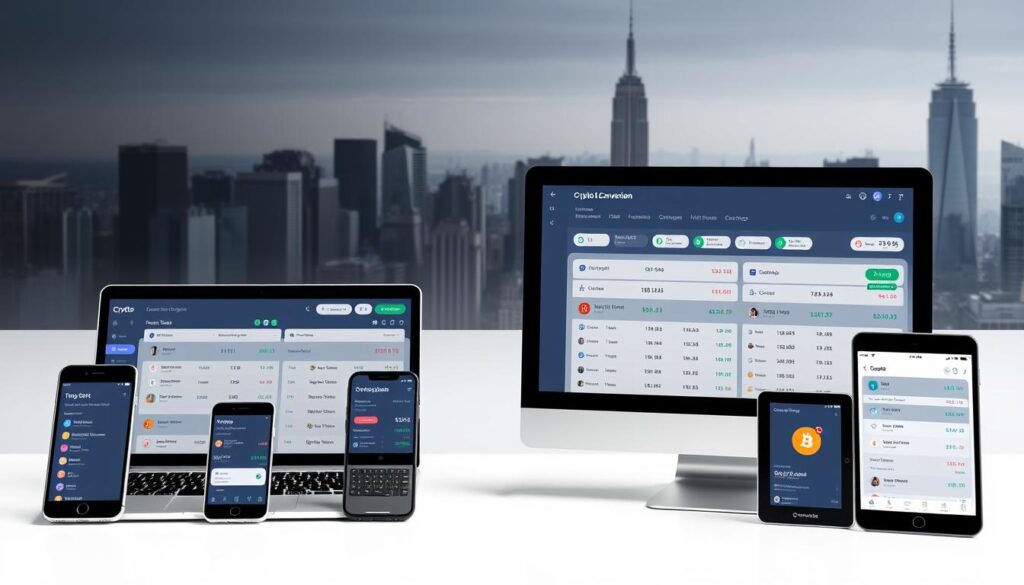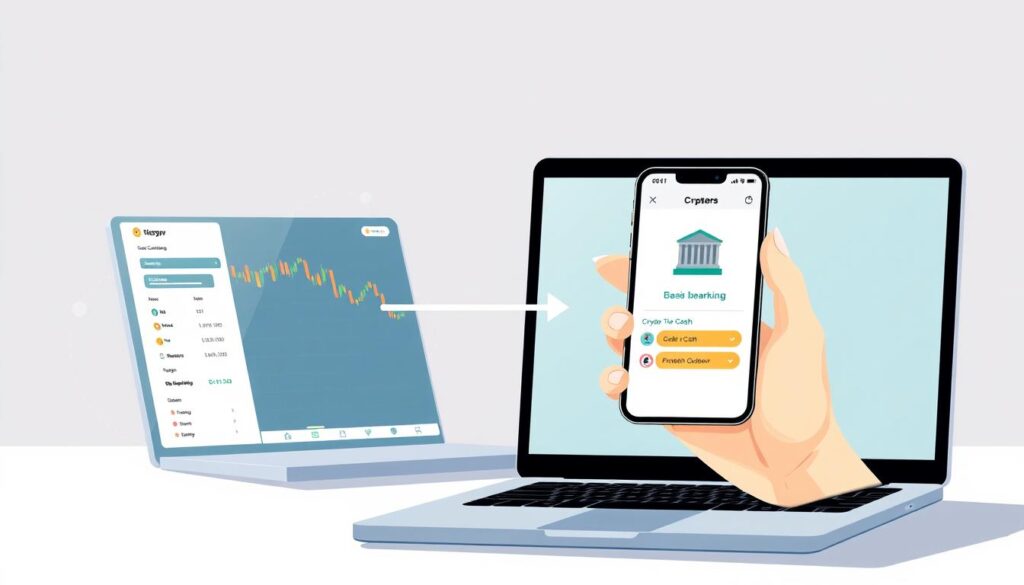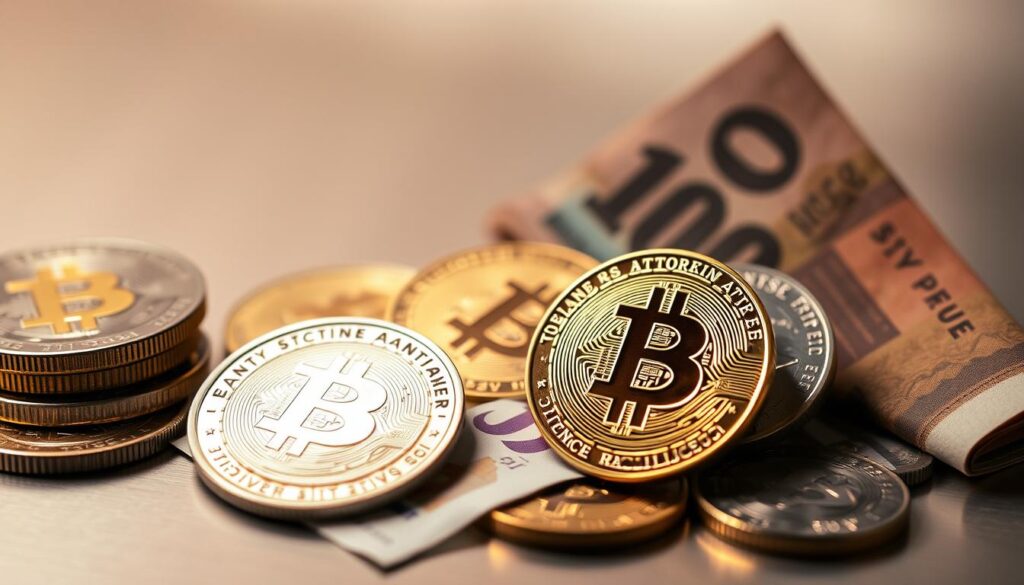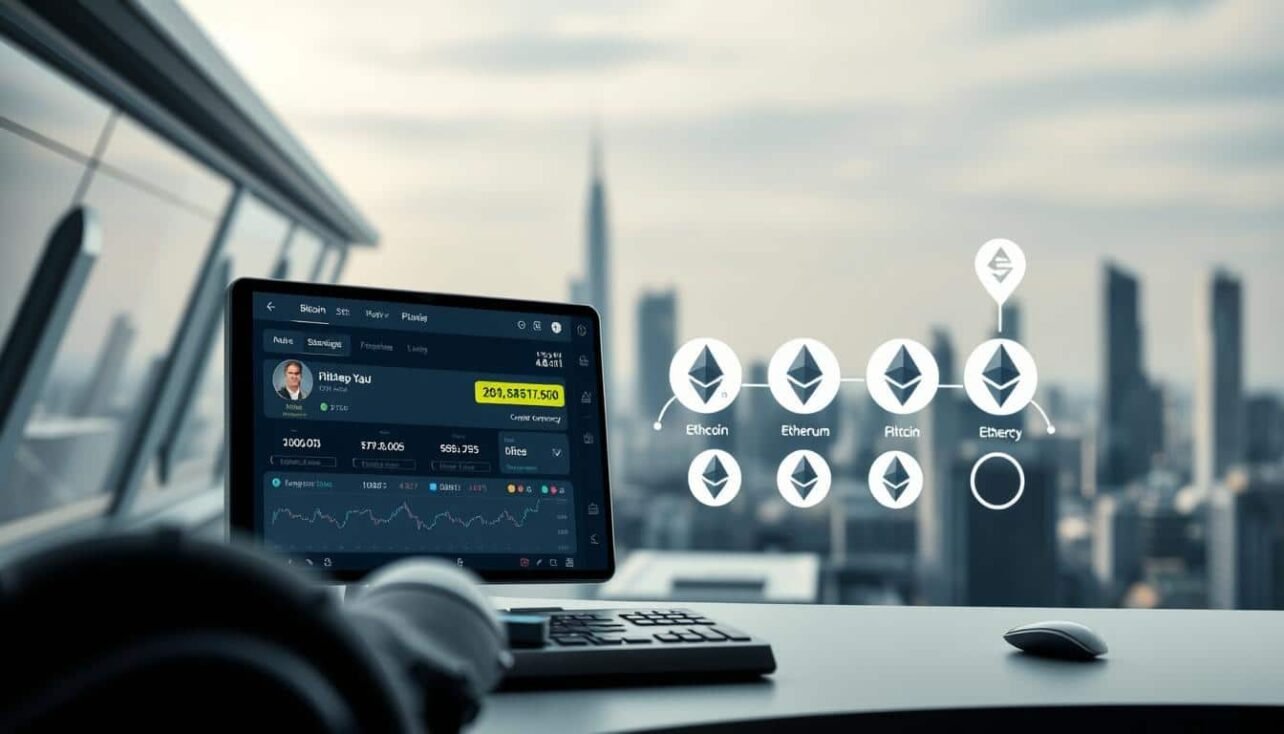Digital currencies like Bitcoin have transformed how people view money. Yet, most daily expenses still require traditional cash. This creates a challenge for crypto holders who want to access their funds for bills, purchases, or emergencies.
Cryptocurrencies operate on decentralized networks, using blockchain technology for security. Unlike dollars or euros, they aren’t controlled by banks or governments. While this offers financial freedom, it also means users need reliable ways to exchange digital assets for physical money.
This guide explains practical strategies to move between crypto and cash securely. We’ll cover popular platforms, fee structures, and timing considerations. Whether you’re new to blockchain or an experienced trader, understanding these options ensures you make informed decisions.
Security and legal compliance are critical when transferring funds. Different methods suit varying needs—like speed for urgent transactions or lower fees for larger amounts. By the end, you’ll know how to balance convenience, cost, and safety.
Key Takeaways
- Cryptocurrencies require specialized platforms to exchange for traditional cash.
- Transaction speed and fees vary significantly between methods.
- Legal regulations differ by region, impacting available options.
- Security measures protect against fraud during transfers.
- Choosing the right service depends on urgency and transaction size.
Exploring the Basics of Cryptocurrency and Cash Markets
Modern finance now includes digital tokens operating outside traditional banking systems. These digital assets rely on advanced cryptography and decentralized networks, unlike government-issued fiat money. While dollars derive value from legal mandates, crypto gains worth through scarcity and real-world utility.
Understanding Digital Assets and Fiat Money
Digital assets like Bitcoin function without central oversight. Their supply limits and transaction rules are coded into their networks. Fiat currencies, such as the US dollar, depend on economic policies and public trust in governments.
This difference creates unique challenges when moving between systems. Crypto markets operate 24/7 globally, while banks follow regional schedules. Volatility often affects exchange rates, requiring strategic timing.
Blockchain Technology and Its Role in Transactions
Every crypto transfer gets recorded on a blockchain—a shared ledger maintained by thousands of computers. These nodes validate transactions in seconds, grouping them into timestamped blocks. Once added, records can’t be altered, preventing fraud.
This system removes middlemen like payment processors. Users pay lower fees compared to traditional wire transfers. However, blockchain’s transparency means transaction histories remain publicly traceable.
Choosing the Right Platform for Your Conversion Needs
Today’s crypto holders have more options than ever to access traditional money. Your choice depends on urgency, transaction size, and preferred payment method. Each service offers unique benefits—from instant cashouts to enhanced privacy.

Centralized Exchanges vs. Peer-to-Partner Platforms
Centralized exchanges like Coinbase and Kraken dominate the market. They provide high liquidity and regulatory compliance, making them ideal for large transactions. Users can transfer funds directly to bank accounts after selling assets.
Peer-to-peer platforms offer more flexibility. Services like LocalBitcoins connect buyers and sellers directly. This method supports diverse payment options, including cash deposits and digital wallets. For exchange comparisons, review fees and regional availability.
Crypto Debit Cards and Bitcoin ATMs as Alternatives
Prepaid crypto cards from Wirex or Crypto.com let you spend digital assets anywhere Visa/Mastercard is accepted. No manual conversions are needed—funds convert automatically during purchases.
Bitcoin ATMs provide immediate cash access. These machines charge higher fees but operate 24/7. Check BitPay’s comprehensive guide for ATM locations and transaction limits. Most machines process withdrawals in minutes using QR codes.
how to convert cryptocurrency to cash easily: Step-by-Step Methods
Turning blockchain-based holdings into spendable currency requires understanding platform mechanics. Most services follow similar procedures, though processing times and fees differ. Proper preparation ensures smooth transitions between digital and traditional finance systems.

Establishing Secure Access Points
Begin by selecting a licensed exchange matching your regional regulations. Registration involves email confirmation and password creation. Most platforms require identity verification through government-issued IDs and proof of address.
Enable two-factor authentication during account setup for enhanced security. Connect your personal wallet by generating deposit addresses within the exchange interface. Double-check character sequences before transferring funds to prevent loss.
Executing Value Transfers
Navigate to the trading section after depositing assets. Choose your crypto/fiat pair—like BTC/USD—and select market or limit orders. Review current rates carefully, as prices fluctuate constantly.
Confirm sale details before finalizing the transaction. Withdrawal options appear once fiat balances reflect in your account. Link verified bank details through secure portals, then request transfers. Most platforms process withdrawals within 1-3 business days.
Managing Fees, Exchange Rates, and Tax Considerations
Converting digital assets into traditional money involves navigating complex fee structures and legal obligations. Hidden costs and regulatory requirements can impact your final payout. Careful planning helps maximize returns while staying compliant.

Understanding Transaction Fees and Exchange Rate Spreads
Platforms charge different fees based on transaction type and size. Centralized exchanges often advertise low trading commissions (0.1%-0.5%) but add withdrawal fees. Peer-to-peer services may include escrow charges or percentage-based costs.
Exchange rates fluctuate between platforms. A 2% spread could reduce your fiat currency payout significantly. Compare rates across multiple services before confirming transfers.
| Platform Type | Trading Fee | Additional Costs |
|---|---|---|
| Centralized Exchange | 0.1% – 0.5% | Bank withdrawal fees |
| Bitcoin ATM | 7% – 15% | Network charges |
| Crypto Debit Card | 1% – 3% | Foreign transaction fees |
Tax Implications, KYC, and Compliance Requirements
Most countries treat crypto sales as taxable events. Short-term gains (assets held under one year) often face higher rates than long-term holdings. Track all conversion dates and amounts for reporting.
KYC rules require identity verification on regulated platforms. Expect to submit government IDs and proof of address. These measures prevent fraud but delay initial transactions.
Security and Best Practices for Safe Transactions
Protecting digital wealth demands proactive security measures during conversion processes. Multiple layers of defense reduce risks when moving between blockchain networks and traditional finance systems. Start by securing access points and verifying transaction partners.

Implementing Two-Factor Authentication and Secure Wallets
Enable two-factor authentication (2FA) on all platforms handling your assets. This adds SMS or app-based verification alongside passwords. Pair 2FA with hardware wallets like Ledger for large transfers—these devices store keys offline, blocking remote hacks.
Create unique 15-character passwords mixing symbols, numbers, and uppercase letters. Avoid recycling credentials across exchanges. Whitelist withdrawal addresses to prevent unauthorized transfers of funds.
| Security Feature | Protection Scope | Best For |
|---|---|---|
| Hardware Wallets | Offline key storage | Long-term asset holders |
| Address Whitelisting | Withdrawal restrictions | Frequent traders |
| Biometric Logins | Account access control | Mobile users |
Preventing Scams and Fraud in Cash Conversions
Research peer traders’ transaction histories and ratings before engaging. Reputable platforms like LocalBitcoins display user trust scores. Insist on escrow services when selling crypto through P2P channels—these hold funds until both parties confirm terms.
Watch for phishing emails mimicking exchange support teams. Legitimate services never ask for passwords via email. Confirm bank deposits before releasing digital assets, even if buyers pressure you to act quickly.
Update software regularly to patch vulnerabilities in wallets or trading apps. Bookmark official platform URLs to avoid fake websites stealing login details. These steps help maintain control over your crypto cash flow.
Innovative Solutions and Emerging Trends in Crypto Cash Conversion
The financial landscape continues evolving as crypto adoption reshapes transactional norms. New methods bridge digital assets with everyday spending while preserving value. These developments offer flexibility beyond traditional exchange platforms.
Over-the-Counter Trading for High-Volume Sales
OTC desks at major exchanges like Binance and Coinbase handle large transactions discreetly. Institutional investors use firms like Cumberland to avoid market price drops. This approach ensures minimal slippage and personalized settlement terms.
Alternative Payment Methods and Future Innovations
Retailers like Newegg now accept cryptocurrencies directly through Shopify integrations. Services such as BitPay convert digital assets instantly during checkout. Stablecoins like USDC provide stability, letting users hold value without immediate cash-outs.
These options reduce reliance on ATMs or bank transfers. As regulatory frameworks mature, expect more hybrid services blending decentralized finance with conventional payment rails. The future favors seamless transitions between crypto and cash ecosystems.


No comments yet